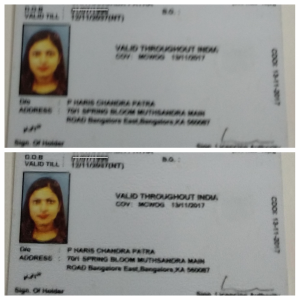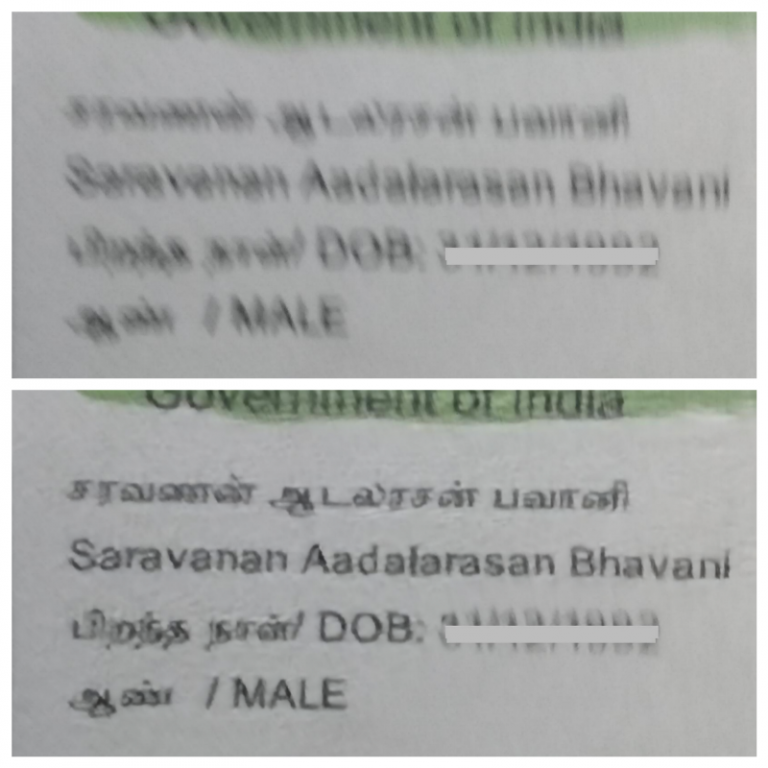Removing blur from images
Everyone misses perfect shots once in a while. Yeah, that’s a pretty shame (We all do that all the time!!!).
There are special moments which we want to capture to make them memorable for lifetime, but just because your camera shook or amount of noise in your camera can really hamper those special moment resulting in blurred images (Maybe your subject is on the move, the reason is not always bad cameras but bad timing as well!!!).
So, if you are also one of us who misses out their special moment, this post is just for you. In this post, you will get to know how you can restore blurred images. All the thanks and applause goes to Neural networks.
What are you going to learn?
From this blog post, you will learn how to make use of the neural network by image deblurring technique with the help of Scale-recurrent Networks. For more info on the technique, you can access this link. The network takes sequence of blurry images as input at different scales and produces a finite set of sharp images. The final output image is at the full resolution.

Figure 1: SRN architecture from the original paper
The method above uses end-to-end trainable networks for the images. Then it used multi-scale convolutional neural network with the approach of state-of-art.
These methods embark from an abrasive measure of the blurry images, and gradually try to recover the suppressed image at higher resolutions.
This Simple Recurrent Network aka SRN makes use of scale recurrent network for multi-scale deblurring. The solver and the corresponding parameter at each scale in a well-established multi-scale method are always same. This is a natural choice as it simply aims to solve the very same problem. If we vary scales in different parameters, then it may cause instability and the extra issue of unrestrictive solution space. Another concern to address here is the input images may have different motion scales and resolutions.
If you allow too much parameter tweaking in each scale, then this might result in creating a solution that is overfitted to a specific motion scale. There are people who believe that this method is also applied to CNN-based methods. Still, there are some recent cascaded networks that still prefer to use independent parameters for every single scale. They justify this method with a pointer which seems quite plausible. They proposed that sharing networks weights across different scales can significantly deteriorate training difficulty and also introduce stability benefit.
Their experiment shows that how with the help of recurrent structure and the combination of the above advantages, the end-to-end deep image deblurring framework can greatly mend training efficiency. They only use less than 1/3rd of the trainable parameters with faster testing time. Apart from this, their method is proven to produce high-quality results both qualitatively and quantitatively. Let’s not dive deep in the research paper for now. Allow me to present you our use-case of this deblurring technology.
We are well-established Global Digital Trust Company, which functions primarily in the domain of verification processes. For this verification process, our customers have to click photos of their documents and submit it for verification. There are probable chances where these photographs may be blurred either due to camera shake or any motion which causes difficulty in reading the document text.

To solve the blurred image problem, we fed these images in the aforementioned Deblurring Model. The results were exhilarating. Below are some of the samples,



Concluding Remarks
What do you learn from this blog? You learn the use of scale recurrent network for deblurring images. With this technology, you can easily extract data from blurred identity card images. You don’t have to poke your customers again and again for the re-submission of the documents due to bad-quality or blurred images. Thanks for the read and do leave a comment to let me know what you feel about this technology. Adios for now fellas!!!
About Signzy
Signzy is a market-leading platform redefining the speed, accuracy, and experience of how financial institutions are onboarding customers and businesses – using the digital medium. The company’s award-winning no-code GO platform delivers seamless, end-to-end, and multi-channel onboarding journeys while offering customizable workflows. In addition, it gives these players access to an aggregated marketplace of 240+ bespoke APIs that can be easily added to any workflow with simple widgets.
Signzy is enabling ten million+ end customer and business onboarding every month at a success rate of 99% while reducing the speed to market from 6 months to 3-4 weeks. It works with over 240+ FIs globally, including the 4 largest banks in India, a Top 3 acquiring Bank in the US, and has a robust global partnership with Mastercard and Microsoft. The company’s product team is based out of Bengaluru and has a strong presence in Mumbai, New York, and Dubai.
Visit www.signzy.com for more information about us.
You can reach out to our team at reachout@signzy.com
Written By:

Signzy
Written by an insightful Signzian intent on learning and sharing knowledge.



